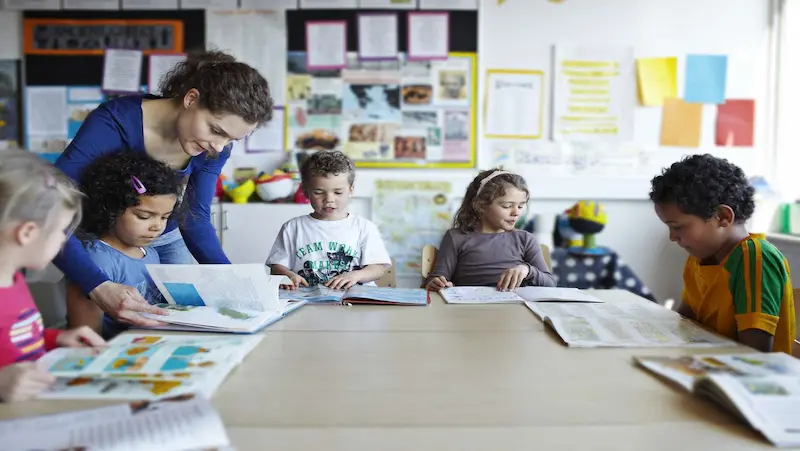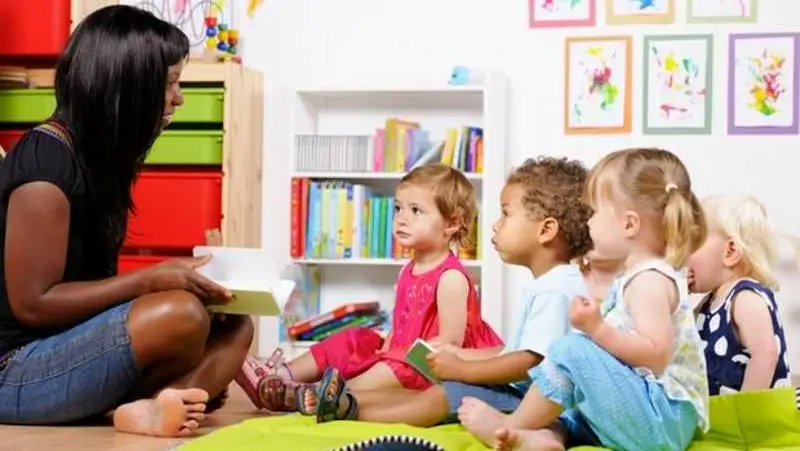Parenthood is a remarkable journey that brings immense joy, fulfillment, and love. As parents, we hold the incredible responsibility of nurturing and shaping the lives of our children. Every parent aspires to create a nurturing environment, ensuring their children grow into happy, healthy, and well-rounded individuals.
The importance of mastering parenthood cannot be overstated. It lays the foundation for effortlessly raising children and cultivating strong parent-child relationships.
When parents possess the necessary skills, knowledge, and tools, they can navigate the various stages of child development with confidence and ease. By mastering parenthood, parents can provide their children with the support they need, creating a positive and nurturing environment for their growth.
One crucial aspect of mastering parenthood is understanding the needs of children at different stages of their development. Infants, toddlers, and adolescents all have unique requirements and challenges.
By gaining insight into their physical, emotional, and cognitive development, parents can tailor their approach accordingly. This understanding allows parents to address their children’s needs effectively and adapt their parenting hack styles as their children mature.
Effective communication also enables parents to guide and teach their children, resolve conflicts, and offer emotional support. When parents are adept at communicating with their children, they can navigate challenging situations and provide the guidance necessary for their children’s well-being.
When parents possess these skills, they can create a balanced and structured environment that promotes their children’s overall development. By understanding effective parenting techniques, parents can provide the guidance and support necessary for their children to flourish.
By engaging in self-reflection, identifying our strengths and weaknesses, and seeking personal growth, we can become more effective parents. This ongoing process allows us to better understand ourselves, improve our parenting skills, and create a positive impact on our children’s lives.
Simplify Mealtime Madness
Mealtime can often feel like a whirlwind of chaos, with the constant struggle to please everyone’s palates, accommodate picky eaters, and maintain a healthy balance. However, with a few simple strategies and creative ideas, you can transform mealtime into an enjoyable and stress-free experience for the entire family.
In this blog post, we will explore some practical tips to simplify mealtime madness, provide ideas for healthy and appealing meals that children will love, and discuss effective strategies for dealing with picky eaters.

Establish a Routine and Involve the Family:
Creating a consistent mealtime routine can help set expectations and provide structure. Designate specific times for meals and involve your family in planning and preparation. Encourage everyone to participate in age-appropriate tasks such as setting the table, choosing ingredients, or assisting in cooking. This involvement fosters a sense of ownership and makes mealtime more enjoyable for everyone.
Keep It Simple with Meal Planning:
Take the stress out of deciding what to cook by implementing a weekly meal plan. Sit down at the start of each week and plan out the meals, considering your family’s preferences and nutritional needs. This saves time and ensures you have the necessary ingredients on hand. Include a variety of dishes, incorporating familiar favorites along with new and exciting recipes.
Opt for Healthy, Appealing Meals:
Making nutritious food appealing to children can be a challenge. Try these ideas to make mealtimes more enticing:
1. Get creative with presentation: Arrange colorful fruits and vegetables into fun shapes or make a smiley face with different food items on the plate.
2. Incorporate dips and sauces: Children often enjoy dipping their food. Offer healthy options like yogurt-based dips, hummus, or homemade dressings to accompany raw veggies, fruits, or whole-grain crackers.
3. Serve meals family-style: Place various components of the meal in separate dishes, allowing children to assemble their plates according to their preferences. This promotes autonomy and increases the chances of trying new foods.
Make Cooking a Family Affair:
Cooking together not only helps distribute the workload but also provides an opportunity to bond and create lasting memories. Assign simple tasks to children, such as rinsing vegetables, measuring ingredients, or stirring the batter. As they actively participate, they’ll develop a sense of pride in the meal they helped create and become more open to trying new flavors.
Dealing with Picky Eaters:
Picky eaters can make mealtime particularly challenging. Here are a few strategies to help broaden their horizons:
1. Introduce new foods gradually: Encourage children to try new foods by incorporating small portions alongside familiar dishes. Offer praise and positive reinforcement for even small steps of progress.
2. Be a role model: Children often mimic their parents’ eating habits. Set an example by enjoying a diverse range of foods yourself, and try new foods alongside them.
3. Be patient and persistent: It may take several attempts before a child accepts a new food. Don’t give up too soon. Offer a variety of options and prepare them in different ways to discover what your child prefers.
4. Involve them in meal planning: When children have a say in what they eat, they are more likely to feel empowered and open to trying new foods. Allow them to choose a new ingredient or a recipe they want to explore.
Transforming Playtime into Learning Opportunities
Playtime is an essential aspect of childhood that fosters imagination, creativity, and social skills. However, playtime can also be transformed into valuable learning experiences that promote cognitive development.
By incorporating educational toys and games, parents and educators can make playtime not only fun but also beneficial for a child’s intellectual growth. In this blog post, we will explore the benefits of incorporating learning into playtime and provide ideas for educational toys and games that promote cognitive development.

Benefits of Incorporating Learning into Playtime:
Enhances Cognitive Development:
Integrating learning activities into playtime can enhance a child’s cognitive development. By engaging in educational toys and games, children can sharpen their problem-solving skills, critical thinking abilities, and logical reasoning. These activities stimulate their minds and promote intellectual growth, providing a solid foundation for future learning.
Fosters Creativity and Imagination:
Integrating learning into playtime encourages children to think outside the box and unleash their creativity. Educational toys and games often require children to come up with unique solutions, invent stories, or create new structures. These activities nurture their imagination and encourage them to explore new possibilities.
Develops Social and Communication Skills:
Playtime is an excellent opportunity for children to develop social and communication skills. Cooperative games and educational toys that encourage interaction with others help children learn to take turns, communicate their ideas effectively, and collaborate with their peers. These skills are crucial for building successful relationships and functioning in society.
Encourages a Love for Learning:
By associating learning with playtime, children develop a positive attitude toward education. When learning is enjoyable and engaging, children are more likely to develop a lifelong love for learning. They become curious, motivated, and eager to explore new concepts and ideas, setting the stage for a successful educational journey.
Educational Toys and Games that Promote Cognitive Development:
Building Blocks:
Building blocks allow children to experiment with shapes, sizes, and spatial awareness. They promote fine motor skills, hand-eye coordination, and logical thinking. Children can build structures, solve problems, and explore basic principles of engineering and architecture.
Puzzle Games:
Puzzles are excellent for cognitive development. They enhance problem-solving skills, pattern recognition, and spatial awareness. Puzzles with varying difficulty levels challenge children to use their logical reasoning and critical thinking abilities.
STEM Kits:
STEM (Science, Technology, Engineering, and Mathematics) kits offer hands-on learning experiences. These kits often include experiments, construction projects, or coding activities. They encourage children to explore scientific concepts, develop analytical skills, and foster a passion for STEM subjects.
Memory and Matching Games:
Memory and matching games help improve concentration, visual memory, and attention to detail. These games challenge children to remember and recognize patterns, objects, or images. They also promote cognitive skills such as observation, focus, and recall.
Role-Playing and Imaginative Play:
Role-playing and imaginative play allow children to explore different roles, scenarios, and narratives. By pretending to be doctors, teachers, or chefs, children develop communication skills, problem-solving abilities, and emotional intelligence. These activities encourage creativity, empathy, and understanding of the world around them.
Creating a Calm Bedtime Routine
Bedtime can often be a challenging time for both children and parents. Establishing a consistent and calming bedtime routine is crucial for promoting healthy sleep patterns and overall well-being. In this blog, we will explore the significance of a consistent bedtime routine for children and provide step-by-step tips to help you create a peaceful and enjoyable bedtime routine for your little ones.

The Significance of a Consistent Bedtime Routine for Children:
A consistent bedtime routine offers numerous benefits for children, including:
Better Sleep Quality: A predictable routine helps signal to your child’s body that it is time to wind down and prepare for sleep. By following a consistent sequence of activities, your child’s body will naturally adjust to the idea of sleep, leading to improved sleep quality and duration.
Reduced Anxiety and Stress: A calm and structured routine helps children feel more secure and relaxed before bedtime. Engaging in soothing activities can help alleviate anxiety and stress, making it easier for your child to transition from an active day to a peaceful night’s sleep.
Improved Behavior: A well-established bedtime routine can positively impact your child’s behavior. When children know what to expect, they are less likely to resist going to bed or engage in disruptive behaviors. This, in turn, promotes a smoother bedtime experience for both children and parents.
Enhanced Parent-Child Bonding: Bedtime routines provide an opportunity for parents and children to connect and bond. By spending quality time together during the bedtime routine, you can strengthen your relationship and create lasting memories.
Step-by-Step Tips for Establishing a Peaceful Bedtime Routine:
Step 1: Set a Consistent Bedtime:
Start by determining an appropriate bedtime for your child based on their age and sleep needs. Consistency is key, so aim to stick to this bedtime as closely as possible, even on weekends.
Step 2: Allow Sufficient Wind-Down Time:
Plan for a wind-down period before bedtime, ideally 30-60 minutes. This period helps your child transition from active play to a calmer state of mind.
Step 3: Create a Relaxing Environment:
Ensure your child’s bedroom is conducive to sleep. Dim the lights, reduce noise, and maintain a comfortable temperature. Consider using a nightlight or soft music to create a soothing ambiance.
Step 4: Engage in Calming Activities:
Choose activities that promote relaxation and calmness. These may include reading a bedtime story, practicing gentle yoga or deep breathing exercises, listening to calming music, or having a warm bath. Avoid stimulating activities such as screen time or rough play.
Step 5: Establish a Bedtime Routine Chart:
Visual cues can help your child understand and follow the routine. Create a simple chart or use pictures to illustrate the steps involved in the bedtime routine. Encourage your child’s participation by letting them mark off completed tasks.
Step 6: Maintain Consistency:
Consistency is essential for a successful bedtime routine. Stick to the same sequence of activities each night and avoid making exceptions unless absolutely necessary. This predictability will help your child feel secure and confident about their nightly routine.
Step 7: Provide Positive Reinforcement:
Praise and reward your child for following the bedtime routine. Positive reinforcement can motivate your child and make the routine more enjoyable. Offer words of encouragement and small rewards, such as a sticker or extra story time.
Managing Challenging Behaviors with Positive Discipline
When it comes to managing challenging behaviors, the conventional approach of punishment and coercion often falls short. Positive discipline offers an alternative approach that focuses on understanding the underlying causes of the behavior and fostering a positive environment for growth and development.
By employing effective strategies rooted in empathy, communication, and respect, parents, educators, and caregivers can help guide children toward positive behavior patterns. In this blog post, we will explore some practical techniques for managing challenging behaviors using positive discipline.

Understand the Behavior:
The first step in managing challenging behaviors is to gain a deeper understanding of why they are occurring. Behavior is a form of communication, and often, underlying factors such as unmet needs, frustration, or emotional distress drive negative behaviors.
Take the time to observe and reflect on the behavior, trying to identify any patterns or triggers. By understanding the root causes, you can respond with empathy and address the underlying issues more effectively.
Build Connection and Trust:
Building a strong relationship built on trust and connection is crucial for managing challenging behaviors positively. Make an effort to spend quality time with the child, engaging in activities that promote bonding.
By establishing a secure and nurturing environment, children are more likely to respond positively to discipline. Open lines of communication, active listening, and validating their emotions are key aspects of building trust.
Set Clear Expectations and Boundaries:
Children thrive when they have clear expectations and boundaries. Clearly communicate the family or classroom rules, ensuring they are age-appropriate and realistic. Involve children in the process, allowing them to contribute to the creation of rules.
When expectations are understood, it becomes easier to hold children accountable for their actions. Reinforce positive behaviors by acknowledging and praising them, reinforcing the desired outcomes.
Teach Problem-Solving and Conflict Resolution Skills:
One of the primary goals of positive discipline is to empower children with the skills necessary to manage their behavior effectively.
Encourage problem-solving and conflict-resolution skills by involving children in the process. Help them identify alternative behaviors and brainstorm possible solutions. By engaging children in finding solutions, they become more invested in their own growth and development.
Use Positive Reinforcement:
Positive reinforcement is a powerful tool in managing challenging behaviors. When a child exhibits positive behavior, provide specific and sincere praise.
This reinforces their understanding of what is expected and encourages them to repeat the behavior in the future. Rewards such as small privileges, stickers, or a special activity can also be used as incentives for consistent positive behavior.
Implement Consequences with Empathy:
While consequences are necessary, they should be implemented with empathy and a focus on learning rather than punishment. Consequences should be logical, related to the behavior, and age-appropriate.
Explain the consequences in a calm manner, ensuring the child understands why they are being implemented. Use this as an opportunity for growth, encouraging reflection and discussing alternative choices.
Seek Support and Self-Care:
Managing challenging behaviors can be mentally and emotionally taxing. Remember to prioritize self-care and seek support when needed.
Connect with other parents, educators, or professionals who can provide guidance and understanding. Taking care of yourself allows you to approach discipline with a calm and positive mindset.
Nurturing Emotional Intelligence in Children
In the journey of raising children, it’s essential to focus not only on their academic achievements but also on their emotional well-being.
Emotional intelligence (EI) plays a vital role in a child’s development, shaping their ability to understand and manage emotions, build meaningful relationships, and navigate the complexities of life. In this blog, we will explore the concept of emotional intelligence and its profound impact on the overall growth and success of children.

Understanding Emotional Intelligence:
Emotional intelligence refers to the capacity to recognize, understand, and manage our own emotions, as well as the emotions of others. It encompasses various skills such as empathy, self-awareness, self-regulation, social awareness, and relationship management.
By developing emotional intelligence, children gain valuable tools to navigate their emotional landscapes, cope with challenges, and establish positive connections with those around them.
Impact on Child Development:
Self-Awareness: Emotional intelligence helps children develop a strong sense of self-awareness. By recognizing and understanding their emotions, they become better equipped to express themselves appropriately and effectively. This self-awareness lays the foundation for healthy self-esteem and self-confidence.
Emotional Regulation: Children who possess emotional intelligence have a greater ability to regulate their emotions. They can identify triggers, manage stress, and respond to situations in a calm and composed manner. This skill fosters resilience, enhances decision-making, and reduces impulsive behavior.
Empathy and Compassion: Emotional intelligence enables children to understand and empathize with the feelings and experiences of others. By recognizing and validating emotions in those around them, children develop compassion, kindness, and a greater capacity for forming meaningful relationships.
Social Skills: Strong emotional intelligence equips children with the necessary social skills to interact effectively with their peers, teachers, and family members. They learn to communicate their needs and opinions, listen actively, resolve conflicts peacefully, and collaborate with others. These skills contribute to better teamwork, leadership abilities, and overall social success.
Academic Performance: Emotional intelligence positively impacts academic performance. Children with developed emotional intelligence tend to focus better, adapt to changes, and display higher levels of motivation and persistence. Additionally, they can navigate interpersonal dynamics in educational settings, enhancing their overall learning experience.
Nurturing Emotional Intelligence in Children:
Role Modeling: Parents and caregivers play a pivotal role in nurturing emotional intelligence. Model healthy emotional expression, empathy, and self-regulation, as children often learn by observing and imitating those around them.
Emotional Literacy: Encourage children to identify and label their emotions accurately. Teach them to differentiate between various emotions and help them understand that all emotions are valid. Provide a safe space for them to express their feelings openly.
Active Listening: Practice active listening when children share their thoughts and emotions. Give them undivided attention, validate their experiences, and respond with empathy. This fosters a sense of being heard and understood, reinforcing emotional growth.
Problem-Solving and Conflict Resolution: Teach children effective problem-solving techniques and conflict-resolution strategies. Encourage them to brainstorm solutions, consider the perspectives of others, and find mutually beneficial outcomes.
Cultivate Empathy: Encourage children to put themselves in others’ shoes and consider different perspectives. Engage in activities that promote empathy, such as volunteering or engaging in acts of kindness. Help them understand the impact of their words and actions on others.
Building Strong Family Bonds Through Quality Time
In today’s fast-paced world, finding time to connect with our loved ones can be challenging. However, creating strong family bonds is essential for fostering healthy relationships and building a solid support system.
One of the most effective ways to strengthen these bonds is by spending quality time together. In this blog, we will explore various activities that promote bonding and create lasting memories, allowing you to build a stronger and more connected family unit.

Family Game Nights:
Organizing regular game nights can be a fantastic way to bring the family together. Choose games that are suitable for all ages and encourage teamwork, healthy competition, and laughter. Whether it’s board games, card games, or even video games, the key is to engage everyone and create an enjoyable environment that facilitates communication and bonding.
Cooking or Baking Together:
Preparing meals together not only strengthens the family bond but also teaches valuable life skills. Involve each family member in the cooking or baking process by assigning age-appropriate tasks. Encourage creativity, experimentation, and the sharing of family recipes. The shared effort and the joy of enjoying a delicious meal or treat will create lasting memories.
Outdoor Adventures:
Exploring the great outdoors as a family is a fantastic way to disconnect from technology and reconnect with nature and each other. Plan hikes, camping trips, or even picnics in the park. Engage in activities like fishing, cycling, or simply going for a walk. Outdoor adventures promote teamwork, problem-solving, and the opportunity to appreciate the beauty of the world together.
Volunteer Work:
Engaging in volunteer activities as a family not only strengthens bonds but also instills values like empathy and compassion. Find local community service opportunities that align with your family’s interests and values. Whether it’s helping at a food bank, participating in a charity run, or volunteering at an animal shelter, working together for a greater cause will create a sense of unity and purpose.
Family Movie Nights:
Movie nights are a classic way to spend quality time together. Rotate the responsibility of choosing movies among family members and create a cozy atmosphere with blankets and snacks. Afterward, engage in discussions about the movie, sharing thoughts, and perspectives. This activity fosters communication, encourages critical thinking, and can spark insightful conversations.
Family Book Club:
Reading and discussing books as a family can be an enriching experience. Choose a book that appeals to different age groups and read it individually. Set aside time each week to discuss the book, share favorite parts, and exchange ideas. This activity encourages intellectual growth, builds vocabulary, and allows for meaningful conversations that strengthen family bonds.
Create Family Traditions:
Establishing family traditions can create a sense of belonging and strengthen family bonds over time. It could be a weekly family game night, a monthly outdoor adventure, or an annual family vacation. These traditions provide something to look forward to and create a shared history that can be passed down through generations.
Streamlining the Household Chores with Kids
Managing household chores can be a demanding task, especially when you have children. However, involving kids in age-appropriate household chores not only lightens the workload for parents but also helps children develop essential life skills, a sense of responsibility, and independence.
In this blog, we will explore some effective tips for streamlining household chores with kids, ensuring a harmonious and cooperative environment within the family.

Start Early, Start Small
Introducing children to household chores at a young age helps them understand the value of contributing to the family and taking care of their surroundings. Begin with simple tasks appropriate for their age, such as picking up toys, putting away books, or tidying their rooms. Starting small allows them to feel successful and builds confidence, motivating them to take on more responsibilities over time.
Make It Fun and Engaging
Household chores need not be seen as dull and monotonous. Turn them into enjoyable activities by incorporating creativity and playfulness. For example, you can turn cleaning into a game by setting a timer to see who can pick up the most toys or make up a fun song while tidying up. By adding an element of fun, you can instill a positive attitude towards chores, making them more appealing to children.
Set Clear Expectations
Communicate clear expectations about what needs to be done, how it should be done, and when it should be completed. Explain why these tasks are important and how they contribute to the overall well-being of the family. Breaking down chores into smaller steps and providing visual aids, such as checklists or chore charts, can help children understand and follow through with their responsibilities.
Foster Independence
Encourage independence by allowing children to take ownership of certain tasks. Provide guidance and demonstrate how to perform the chore initially, and then gradually let them take the lead. This empowers children and gives them a sense of accomplishment. As they become more proficient, gradually assign them more complex tasks, such as making their beds or folding laundry.
Offer Age-Appropriate Tasks
Assigning age-appropriate tasks ensures that children can handle the responsibilities assigned to them. Here are some examples of tasks suitable for different age groups:
Preschoolers (3-5 years): Sorting laundry, setting the table, watering plants, feeding pets, and dusting low surfaces.
Early Elementary (6-8 years): Making their beds, organizing toys, folding clothes, helping with meal preparation (simple tasks like mixing ingredients), and sweeping floors.
Older children (9-12 years): Washing dishes, taking out the trash, mowing the lawn (under supervision), cleaning bathrooms, and assisting with grocery shopping.
Establish a Chore Routine
Creating a consistent chore routine helps children develop a sense of structure and responsibility. Set specific times for chores and ensure that they become part of the daily or weekly routine. Having a routine eliminates confusion and negotiation, as children will know what is expected of them. Additionally, it fosters a sense of accountability and helps children develop time management skills.
Show Appreciation and Acknowledge Efforts
Recognize and appreciate your children’s efforts in completing their chores. A simple “thank you” or a word of praise can go a long way in motivating them to continue contributing to the household. You can also create a reward system, such as a sticker chart, where they earn points for completing tasks and redeem them for small rewards or privileges.
Also, you have to know more about the concept of online robotics classes for kids
Mastering the Art of Effective Communication
Effective communication is a vital skill that plays a significant role in our personal and professional lives. It enables us to express ourselves, build connections, and understand others. When it comes to parent-child relationships, effective communication is of utmost importance.
It serves as the foundation for healthy connections, trust, and understanding between parents and their children. In this blog post, we will explore the significance of effective communication in the parent-child dynamic and provide insights on how to master this art.

Establishing a Strong Bond:
Effective communication fosters a strong bond between parents and children. It provides a platform for parents to express love, support, and encouragement, creating a sense of security and belonging. Regular, open conversations promote a deeper understanding of each other’s thoughts, feelings, and perspectives, leading to a stronger parent-child relationship.
Building Trust and Respect:
Through effective communication, parents demonstrate their willingness to listen and understand their children. When children feel heard and acknowledged, trust and respect naturally develop. By maintaining open lines of communication, parents can create an environment where children feel safe to share their joys, concerns, and challenges without fear of judgment or rejection.
Enhancing Emotional Intelligence:
Effective communication helps children develop emotional intelligence, enabling them to understand and manage their own emotions and empathize with others. When parents engage in active listening, validation, and compassionate responses, they teach their children how to express themselves, regulate emotions, and resolve conflicts in healthy ways.
Encouraging Positive Behavior:
Communication is a powerful tool for reinforcing positive behavior in children. By using clear and constructive language, parents can effectively convey expectations, set boundaries, and reinforce values. Instead of resorting to harsh discipline methods, effective communication allows parents to explain consequences, provide guidance, and encourage self-reflection, ultimately promoting positive behavior in children.
Nurturing Independence and Decision-Making Skills:
As children grow older, effective communication becomes crucial in nurturing their independence and decision-making abilities. By actively listening to their children’s opinions, ideas, and concerns, parents empower them to think critically, make informed choices, and develop a sense of autonomy. This process fosters self-confidence and prepares children for the challenges they will face in the future.
Tips for Mastering Effective Communication:
a. Active Listening: Pay attention to your child’s words, non-verbal cues, and emotions. Practice active listening by summarizing and reflecting back on what they’ve said to ensure understanding.
b. Open and Non-judgmental Environment: Create a safe space for open communication without criticism or judgment. Encourage your child to express themselves honestly and respect their perspectives.
c. Use Age-Appropriate Language: Tailor your communication style to your child’s age and level of understanding. Avoid using complex or jargon-filled language, and be patient when explaining difficult concepts.
d. Show Empathy and Validation: Validate your child’s feelings and experiences. Empathize with their emotions, even if you don’t agree with their viewpoint. This helps build trust and strengthens your connection.
e. Set Aside Dedicated Time: Allocate regular, uninterrupted time for meaningful conversations with your child. This could be during family meals, walks, or dedicated one-on-one sessions.
f. Be a Role Model: Lead by example and demonstrate effective communication skills in your own interactions. Your child learns from observing how you communicate with others, so strive to model respect, active listening, and empathy.
Explore about coding school for kids
Conclusion
In conclusion, parenthood is a journey filled with joy, challenges, and endless learning opportunities. As parents, we constantly strive to provide the best for our children and make their upbringing as smooth and enjoyable as possible. In this blog, we have explored ten ingenious hacks that can help us effortlessly navigate the ups and downs of raising kids.
Firstly, we emphasized the importance of establishing routines and maintaining a structured environment. Consistency and predictability can greatly contribute to a child’s sense of security and overall well-being.
Secondly, we delved into the significance of effective communication with our children. By actively listening, empathizing, and fostering open dialogue, we can build strong bonds and nurture their emotional development.
In addition, we explored the benefits of setting realistic expectations and embracing imperfection. Parenthood is a learning process for both parents and children, and it’s essential to allow room for mistakes and growth.
We also explored the advantages of involving children in household chores and teaching them essential life skills from a young age. This not only instills a sense of responsibility but also fosters independence and self-sufficiency.
Lastly, we emphasized the importance of embracing individuality and celebrating our children’s unique qualities. By nurturing their passions and interests, we empower them to become confident individuals who can contribute positively to the world.
Mastering parenthood is a continuous journey that requires patience, adaptability, and a deep understanding of our children’s needs. By implementing these ingenious hacks, we can navigate the challenges of raising kids more effortlessly while savoring the precious moments of their growth. Remember, there is no one-size-fits-all approach to parenting, but with love, guidance, and a little bit of creativity, we can create a nurturing and fulfilling environment for our children to thrive.
Also, BrightChamps provides a comprehensive platform for learning about money for kids, offering interactive and engaging resources that teach financial literacy, budgeting, saving, and other essential money management skills.
Frequently Asked Questions
A1. Practical strategies for managing daily routines and schedules for easier parenting:
1. Prioritize and establish consistent routines.
2. Use visual aids or charts to help children understand and follow the schedule.
3. Break tasks into smaller, manageable steps.
4. Set realistic expectations and allow for flexibility.
5. Involve children in decision-making to foster their cooperation.
A2. Creating a calm and organized environment at home for child development:
1. Declutter and organize living spaces regularly.
2. Establish designated areas for different activities.
3. Use storage solutions to keep toys and materials organized.
4. Create a quiet corner for relaxation and reflection.
5. Implement daily rituals to promote calmness, such as reading or meditation.
A3. Creative ways to encourage positive behavior and discipline without punishment:
1. Use positive reinforcement, such as praise and rewards.
2. Focus on teaching and modeling desired behavior.
3. Use natural consequences to help children learn from their actions.
4. Utilize time-ins or calm-down corners for self-regulation.
5. Practice active listening and open communication to understand underlying needs.
A4. Effective communication and connection for a strong parent-child relationship:
1. Be present and attentive during conversations.
2. Practice active listening and validate your child’s feelings.
3. Use age-appropriate language and explanations.
4. Show empathy and understanding.
5. Engage in regular one-on-one quality time together.
A5. Ingenious hacks for promoting healthy eating habits and managing picky eaters:
1. Offer a variety of nutritious foods and involve children in meal planning.
2. Make meals visually appealing and fun with creative presentations.
3. Serve as a role model by eating healthy foods yourself.
4. Encourage tasting and exploring new foods without pressure.
5. Avoid power struggles and respect children’s food preferences within reason.
A6. Establishing a successful bedtime routine for sufficient sleep and personal time:
1. Create a consistent bedtime routine with relaxing activities.
2. Set clear expectations and boundaries around bedtime.
3. Create a calm sleep environment with dim lighting and comfortable bedding.
4. Limit stimulating activities and screen time before bed.
5. Ensure a consistent sleep schedule, even on weekends.
A7. Innovative approaches to managing screen time and balancing technology use for kids:
1. Set screen time limits and establish technology-free zones or times.
2. Encourage a balance of physical activities, hobbies, and screen time.
3. Use parental controls and monitoring tools for age-appropriate content.
4. Engage in co-viewing and discussing media content with your child.
5. Encourage creative and educational screen time options.
A8. Encouraging child independence and fostering self-confidence in a supportive manner:
1. Provide age-appropriate responsibilities and encourage autonomy.
2. Praise effort and celebrate achievements, big or small.
3. Allow space for decision-making and problem-solving.
4. Offer guidance and support when needed.
5. Encourage children to express their thoughts and opinions.
A9. Smart strategies for handling challenging situations and tantrums with grace and patience:
1. Stay calm and model self-control.
2. Validate your child’s emotions and help them label their feelings.
3. Use distraction or redirection techniques to defuse tantrums.
4. Provide a safe and quiet space for your child to calm down.
5. Teach and reinforce appropriate ways to express emotions.
A10. Prioritizing self-care and finding a balance between parenting and personal needs:
1. Schedule a regular time for self-care activities.
2. Seek support from friends, family, or support groups.
3. Delegate tasks and share responsibilities with a partner or caregiver.
4. Set realistic expectations and avoid perfectionism.
5. Remember that taking care of yourself ultimately benefits your child.


 We are an army of educators and passionate learners from BrightChamps family, committed to providing free learning resources to kids, parents & students.
We are an army of educators and passionate learners from BrightChamps family, committed to providing free learning resources to kids, parents & students.













